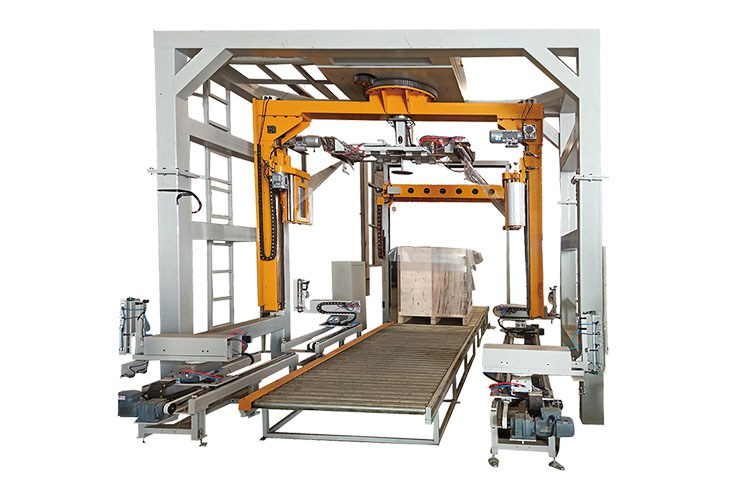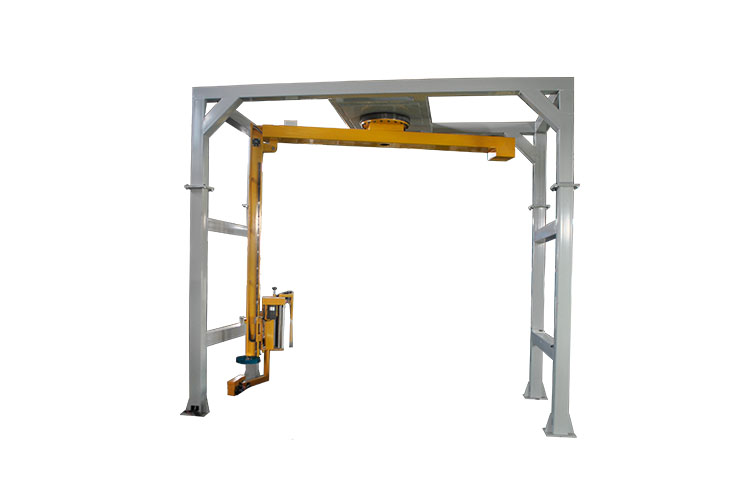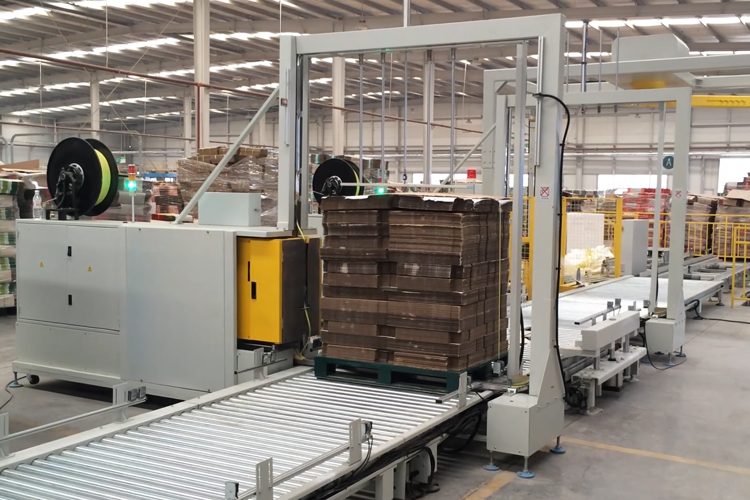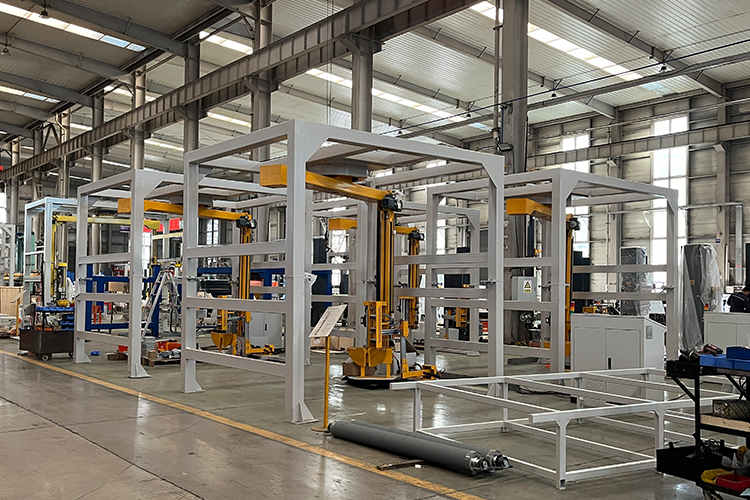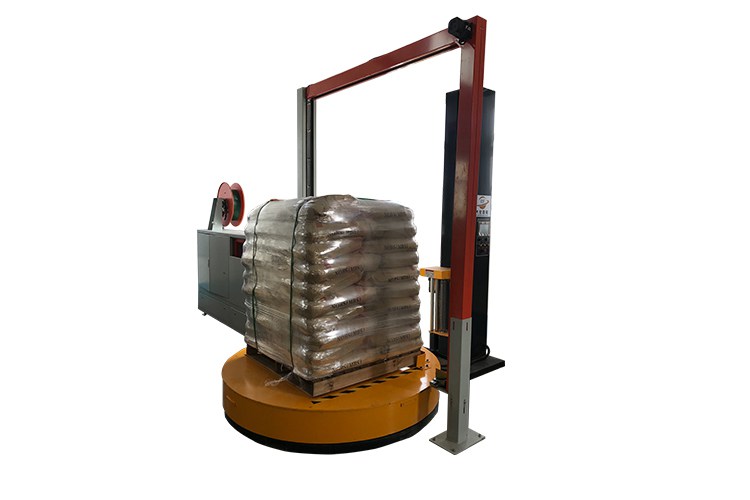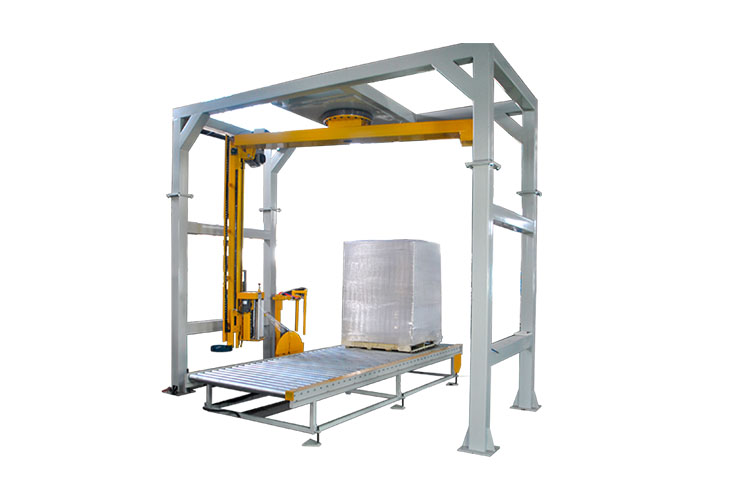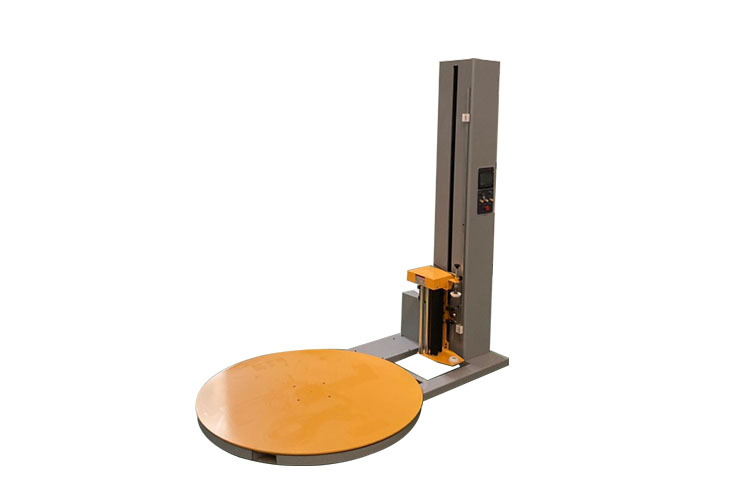Manual wrapping too slow? Pallet wrapping machines boost packaging efficiency by 80%!
Date: 2025-04-17Id:153Views:

The birth of the pallet wrapping machine has provided businesses with a timely solution, significantly reducing the packaging time for individual palletized goods. Typically, an ordinary pallet wrapping machine can complete the packaging of 40 pallets per hour, achieving an efficiency improvement of over 80% compared to manual wrapping. This means that in high-throughput environments such as logistics warehouses and e-commerce sorting centers, goods can be packed and moved in and out of storage more quickly, substantially enhancing overall operational capacity.
The machine is designed with flexibility in mind, allowing it to adapt to pallets of various sizes and materials. Whether it’s common plastic or wooden pallets, or custom-sized pallets, simple adjustments to the machine’s parameters or the replacement of auxiliary components can ensure a seamless fit. Moreover, whether the pallet carries neatly stacked cartons, drum containers, or irregularly shaped products, the pallet wrapping machine can tailor its wrapping method—such as adjusting the number of spiral layers, the starting position, or the wrapping pattern—to achieve comprehensive, snug packaging that meets diverse needs.
The operation interface of the pallet wrapping machine is intuitive and user-friendly, typically equipped with control buttons or a touchscreen. After minimal training, operators can quickly master basic functions such as starting, stopping, and parameter adjustment. During actual operation, simply placing the palletized goods in the designated position and pressing the start button will initiate the automated packaging process, eliminating the need for complex manual techniques. This reduces businesses’ reliance on specialized labor, cuts down on manpower and management costs, and minimizes disruptions caused by staff turnover.
With its notable advantages in efficiency, flexibility, and ease of operation, the pallet wrapping machine has become a powerful tool in addressing modern packaging challenges.
Related



